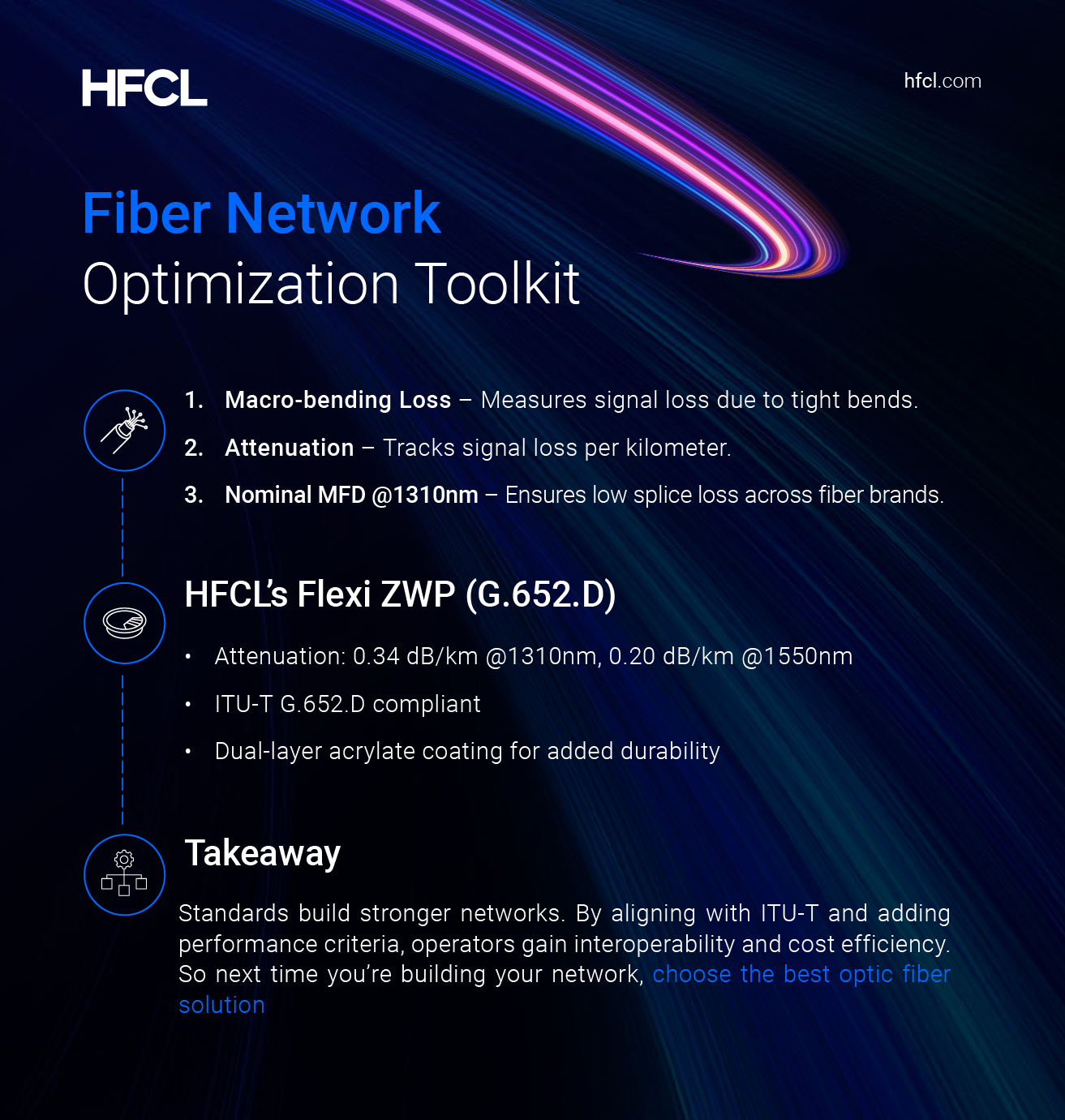In today’s world, where everything is connected ensuring seamless communication between different components is paramount in the ever-evolving landscape of networking technologies. The ability of various components to work together efficiently, plays a pivotal role in maintaining integrity and efficiency of data transmission systems.
Envision your Wi-Fi router seamlessly communicating with your smartphone, computer, and smart TV, regardless of their manufacturers, without encountering any issues. That’s the power of interoperability. It’s what allows different pieces of technology, even from different vendors to work smoothly alongside each other.
Ensuring interoperability of single-mode fiber from different vendors
Network operators typically use optical fiber cables from several vendors to optimize costs and promote healthy competition between partners.
However, they can do so only with seamless interoperability between single-mode fiber cables from multiple vendors for network integration. This allows different devices, systems, and networks to work together, enabling network operators to select from a diverse range of equipment and solutions in accordance with their needs.
Promoting vendor diversity involves sourcing goods and services from multiple suppliers instead of relying solely on one source. This practice is crucial for avoiding vendor lock-in, where a customer becomes overly reliant on a specific vendor's offerings. It offers freedom of choice and flexibility, helps manage costs, and encourages competition within the industry. Ultimately, it drives innovation and stimulates market growth.
In the backbone of modern communication networks, single-mode fiber stands tall as a pinnacle of efficiency and reliability. It’s ability to transmit data over long distances with minimal signal loss makes it indispensable for telecommunications, data centers and beyond.
What is Single-mode Fiber?
Single-mode fibers, also known as mono mode fibers, allow the transmission of a single ray of light as a carrier to propagate at a time. This kind of fiber come with a narrow core diameter of 8 to 10 micrometers, enabling it to propagate at the wavelengths of 1310 nm and 1550 nm. Single-mode fibers ensure that the signals travel in a straight line without bouncing off the edges, thus eliminating distortion from overlapping light pulses. This property also makes it most suitable for cable TV, internet and telephone transmission. In addition, single-mode fibers come with low signal attenuation, thus making them perfect for transmitting over long distances.
Advantages and disadvantages of single-mode fiber (Infographic Content)
- • One of the biggest advantages of single-mode fiber is that it provides high bandwidth than a multimode fiber optic cable enabling the transmission of large amounts of data at high speeds.
- • In addition, lower attenuation in single-mode fiber allows it to cover a greater distance, making it ideal for long-distance transmission.
- • Unlike multimode fibers, which are prone to modal dispersion, single-mode fibers transmit only a single-mode of light, thereby eliminating this cause of signal degradation.
At the same time, it is tough to couple light into a single-mode fiber when compared with multimode fiber because of the small fiber core diameter, which demands much tighter tolerance when compared with multimode fiber. This complexity can increase installation time and cost. In addition, single-mode fiber requires high precision during manufacturing contributes to higher cost.
Why is interoperability important for single-mode fiber?
Standardization of transmission and geometrical characteristics of optical fibers is crucial to ensure smooth interoperability of the telecommunication systems.
The International Telecommunications Union – Telecommunication Standardization Sector (ITU-T) has developed recommendations, especially G.652.D and G.657 series, to ensure interoperability, thus enabling service providers to use fiber optic cables from multiple vendors.
Enabling Interoperability
To begin with, it should be kept in mind that all G.657.A1 fibers are not the same even when they adhere to ITU-T recommendations since ITU-T shares only the minimum requirements for a fiber grade.
To ensure optimal performance when combining single-mode fibers from different vendors, the network operators should consider a few factors:
- • Imposing stricter attenuation requirements beyond the ITU-T minimums ensures minimal signal loss across the fiber, surpassing standard recommendations.
- • Ensuring the nominal mode field diameter (MFD) aligns with the fiber's "light-carrying core" size is crucial. When MFDs are similar across different vendors, it minimizes signal loss during splicing. This is particularly vital for G.657.A1 fibers.
Several factors, including macro bending loss, attenuation, and mode field diameter, must be considered by network operators to ensure the best possible performance while mixing single-mode fibers from different vendors.
The network operators should also specify a nominal Mode Field Diameter (MFD) at 1310nm for low fusion splice loss. This helps ensure low-loss fusion splicing even when mixing fiber from different manufacturers. Most G.652.D and G.652.A1 single-mode fibers have a nominal MFD of ~9.2 microns.
